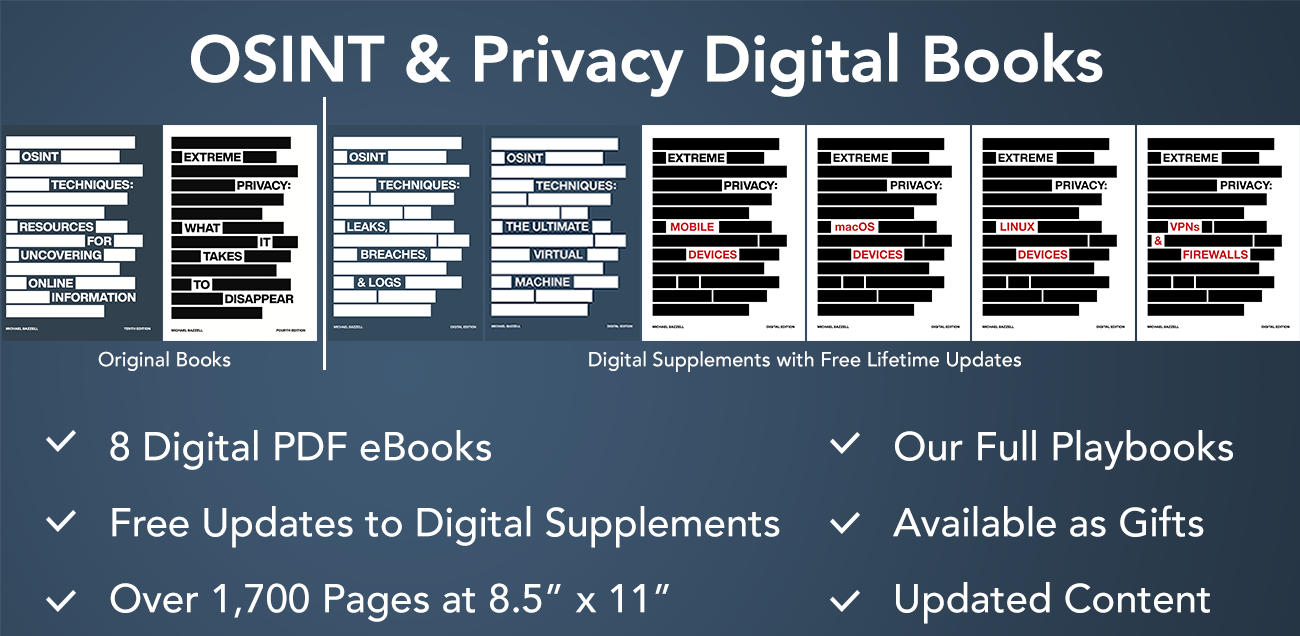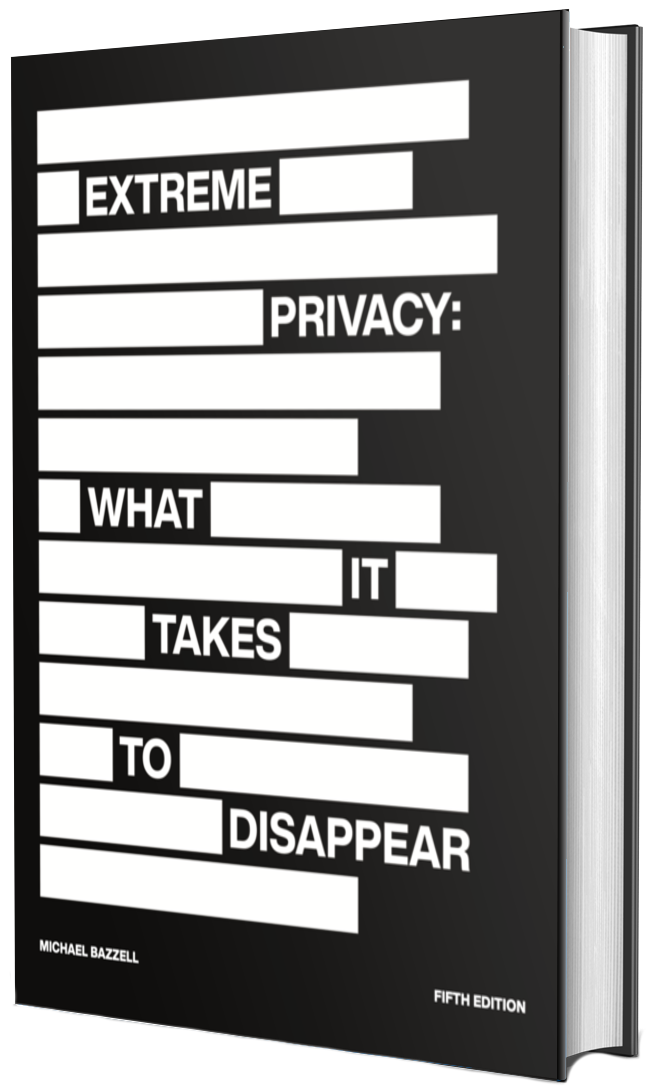Credit Freeze Guide
This is the second step of a four-step process to request, freeze, and remove your personal information from within data broker, credit reporting, and password exposure services.
1: Data Request Guide
2: Credit Freeze Guide
3: Data Removal Guide
4: Credential Exposure Removal Guide
Credit Opt-Out
Under the Fair Credit Reporting Act (FCRA), the consumer credit reporting companies are permitted to include your name on lists used by creditors or insurers to make firm offers of credit or insurance that are not initiated by you. These are the pre-approved credit and insurance offers that you receive in the mail. They are often physically stolen by street criminals and submitted to receive a credit card in your name at their address. The FCRA also provides you the right to opt-out, which prevents consumer credit reporting companies from providing your credit file information to businesses. Through the website optoutprescreen.com, you may request to opt-out from receiving such offers for five years. If you want to opt-out permanently, you can print a form that you must send through postal mail. If you choose to opt-out, you will no longer be included in offer lists provided by consumer credit reporting companies.
Credit Freeze Submission
Now that credit reports and freezes are free due to a new federal law, which can be researched at https://www.congress.gov/bill/115th-congress/senate-bill/2155, I feel it is time to execute credit freezes in all possible locations. First, submit a credit freeze at the three “major” credit bureaus via their online submission, telephone, or postal mail options displayed within the following resources. I typically recommend clients begin with the online submission process and move to telephone or postal mail applications if anything is declined (which is common).
Equifax
Online: https://www.equifax.com/personal/credit-report-services/credit-freeze/
By Phone: 800-685-1111
By Mail: Equifax Security Freeze
PO Box 105788, Atlanta, Georgia 30348-5788
Experian
Online: https://www.experian.com/freeze/center.html
By Phone: 888-397-3742
By Mail: Experian Security Freeze
PO Box 9554, Allen, TX 75013
TransUnion
Online: https://service.transunion.com/dss/orderStep1_form.page
By Phone: 888-909-8872
By Mail: TransUnion LLC
PO Box 2000, Chester, PA 19016
Freezing your credit within these three bureaus will stop 90% of fraudulent identity takeover, but we can do better. The following were previously explained when we requested credit reports from the “minor” providers. The following steps allow you to freeze your credit profiles in order to prevent abuse.
Chex
Online: https://www.chexsystems.com/web/chexsystems/consumerdebit/page/securityfreeze/placefreeze/
By Phone: 800-887-7652
By Mail: Chex Systems, Inc. Attn: Security Freeze, 7805 Hudson Road, Suite 100, Woodbury, MN 55125
CoreLogic Credco: Freeze Equifax, Experian, and TransUnion to block sharing by CredCo
Innovis
Online: https://www.innovis.com/personal/securityFreeze
By Phone: 800-540-2505
By Mail: Innovis Consumer Assistance, PO Box 26, Pittsburgh, PA, 15230-0026
LexisNexis
Online: https://consumer.risk.lexisnexis.com/freeze
By Phone: 800-456-1244
By Mail: LexisNexis Consumer Center, Attn: Security Freeze, P.O. Box 105108, Atlanta, GA 30348-5108
MicroBilt Connect
Online: https://www.microbilt.com/us/consumer-affairs (Select your state and follow the directions)
By Phone: 888-222-7621
By Mail: MicroBilt/Connect, Attn: Consumer Affairs Department, P.O. Box 440693, Kennesaw, GA 30160
NCTUE
Online: https://www.nctue.com/Consumers
By Phone: 866-349-5355
By Mail: NCTUE Security Freeze, PO Box 105561, Atlanta, GA 30348
Fraud Alerts
In the previous edition of this guide, I only placed emphasis on the credit freeze, and did not explain a credit fraud alert. This was intentional, as a freeze is much more powerful than an alert. A freeze prohibits a hard credit check while an alert simply asks a creditor to dig deeper into any requests. In other words, a freeze stops unauthorized credit pulls while a fraud alert slows them down. In 2020, I began recommending both credit freezes and fraud alerts if you want true protection from unauthorized credit accounts. This is because credit bureaus are slowly removing some of the protections of the credit freeze due to widespread adoption and the elimination of fees. Basically, people are freezing their credit in record numbers, which is causing headaches to the credit industry.
All three major credit bureaus offer fraud alerts without any charge. However, choosing the best option is not always clear. Each bureau offers an initial 1-year alert, extended 7-year alert, or 1-year active duty military alert. My preference is always the extended 7-year option, but there are requirements to qualify. In order to obtain the 7-year protection, you must be the victim of “fraud” and must submit proof of this claim. Traditionally, this would be a police report of identity theft. However, I am aware of many people who cited various popular data breaches and submitted letters of notification from the breached companies. If you possess a police report of identity theft, this is always preferred. If not, I believe you should attempt a fraud alert by providing whatever documentation you have which supports fraud potential toward your credit. Once you have identified the documentation you will be sending, navigate to the following websites and select the 7-year extended fraud alert.
https://www.equifax.com/personal/credit-report-services/credit-fraud-alerts/
https://www.experian.com/fraud/center.html
https://www.transunion.com/fraud-alerts
Follow the directions for each provider and wait for a mailed letter confirming activation of the alerts. Any time you seek a new line of credit, the credit bureau will apply more scrutiny toward your application, regardless of releasing a credit freeze.
I now believe that a credit freeze + fraud alert combination is the most protective solution in regard to preventing unauthorized access to your credit report. The freeze prevents a hard pull on your credit, but it can be defeated by a determined adversary. The fraud alert adds additional layers and should demand a phone call to a predetermined number. Possessing both should deter a common criminal looking for an easy score.
Digital Books

Buy Individual Books
Buy All 9 Books for $150
OSINT Techniques (10th Edition)
OSINT Techniques: Leaks, Breaches & Logs
OSINT Techniques: The Ultimate Virtual Machine
Extreme Privacy (5th Edition)
Extreme Privacy: Mobile Devices
Extreme Privacy: macOS Devices
Extreme Privacy: Linux Devices
Extreme Privacy: VPNs & Firewalls
This Book Was Self-Published
Individual orders available on each book page. PDFs will be immediately available for download after purchase, and an email will also include the download link. You must provide an email address where we can reach you to deliver any updates. This can be a masked, forwarding, or private email provider, but please do not use temporary addresses which you will not be able to control in the future. All PDFs will include a visible and hidden watermark with your order number, but will not include your name, email, or any other personally identifying text. All orders are delivered via SendOwl, and purchasing details are submitted through our own Stripe account. We do not store your credit card information. Due to the nature of instant delivery of digital products, all sales are final.
Privacy Book
Our latest (5th Edition) book on Extreme Privacy is now available. Click HERE for details.
